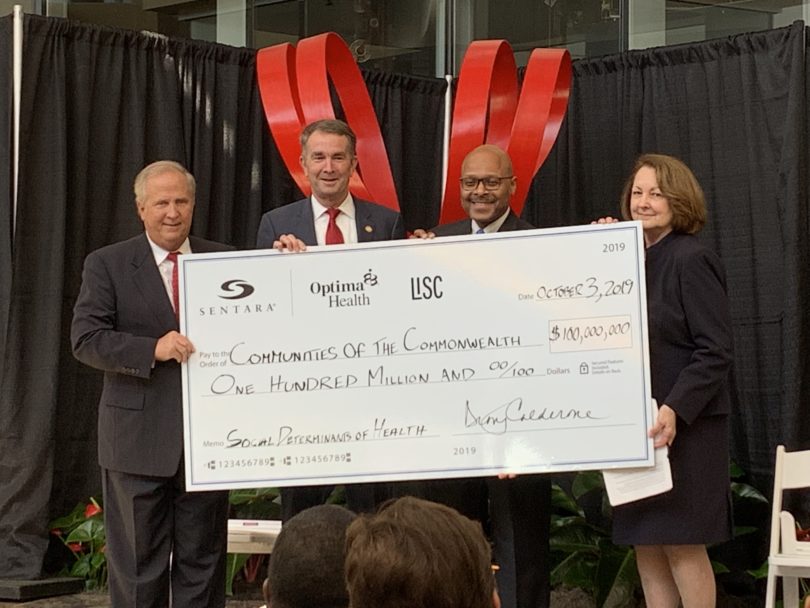Stable housing. Transportation. Good jobs. Access to nutritious food. These are needs faced by everyone that can’t be treated within the walls of a health-care facility. A health-care facility can, however, serve as a catalyst to help bring those things to the communities it serves. That’s exactly what Sentara Healthcare hopes to do by working with a national community development organization to address some of the most fundamental issues in public health.
To that end, Sentara and its health insurance subsidiary Optima Health on Thursday announced a $100 million initiative to make Hampton Roads a healthier place. Sentara will contribute $50 million in partnership with the Local Initiatives Support Corporation (LISC), a New York-based nonprofit that specializes in revitalizing communities.
LISC, in turn, will raise another $50 million from public and private sources, as well as open a local office in Hampton Roads. The new office will complement LISC’s long-standing program office in Richmond, where it is working to redevelop areas and help attract businesses.
“When we invest in the health of our communities, we’re also invested in the health of our children and their future,” said Virginia Gov. Ralph Northam, who attended the announcement for the partnership at Sentara Norfolk General’s Heart Hospital.
Northam, who campaigned on expanding Medicaid, praised Sentara for looking to address the root causes of some of the most pressing health concerns in the state. “Sentara is demonstrating a clear commitment to the Commonwealth by looking for meaningful solutions that truly address health in a holistic way,” he said.
Research has shown that social determinants of health — the conditions in which people live, work and learn — have a significant and lasting impact on health outcomes, according to Sentara. About 80 percent of a person’s health can be explained by factors such as income, education and neighborhood conditions, and the health behaviors shaped by these circumstances, according to County Health Rankings, a project of the Robert Wood Johnson Foundation and the University of Wisconsin Population Health Institute.
In 2017, more than 250,000 children in Virginia lived in poverty, and over 50 percent of those children lived in households that spent more than half of their income on housing, said Howard P. Kern, president and CEO of Sentara Healthcare. That leaves little else for money for transportation and food, let alone for medical care.
The partnership between Sentara and LISC intends to address these factors by facilitating the development and construction of new affordable housing, including for those with mental and behavioral health needs, as well as promote health care access and social services for residents. The initiative also intends to provide job training and coaching and offer support to local entrepreneurs.
Since 1979, LISC has invested $20 billion into communities to build or rehabilitate more than 400,000 affordable homes and apartments and develop nearly 67 million square feet of retail, community and educational space. LISC’s president and CEO, Maurice Jones, said Sentara’s pledge is the largest commitment it has ever received from one of its hospital partners.
Jones, who is from Norfolk, said that although world-class facilities may be nearby, when it comes down to it, people need healthy homes. The conditions in which people live can even affect their life expectancy rates — in one area of Fairfax County in Northern Virginia, a person can expect to live to 91 years old, while in Virginia Beach, to age 82. In sharp contrast, areas of Hampton and Norfolk — just miles away from a hospital such as Norfolk General — are 70 and 62.
The kind of investment by Sentara and LISC “can make a real difference in people’s lives,” Northam said.
The work planned by the initiative will stretch well beyond South Hampton Roads to benefit the communities surrounding all 12 of Sentara’s hospitals, said Dian Calderon, chair of the Sentara Healthcare Board of Directors. Once LISC opens its local office — the time frame and location have not yet been announced — it will form a local advisory board and begin seeking input from the community.
“We not only care about the communities we live in,” Calderon said, “we also take action to make them healthier.”


